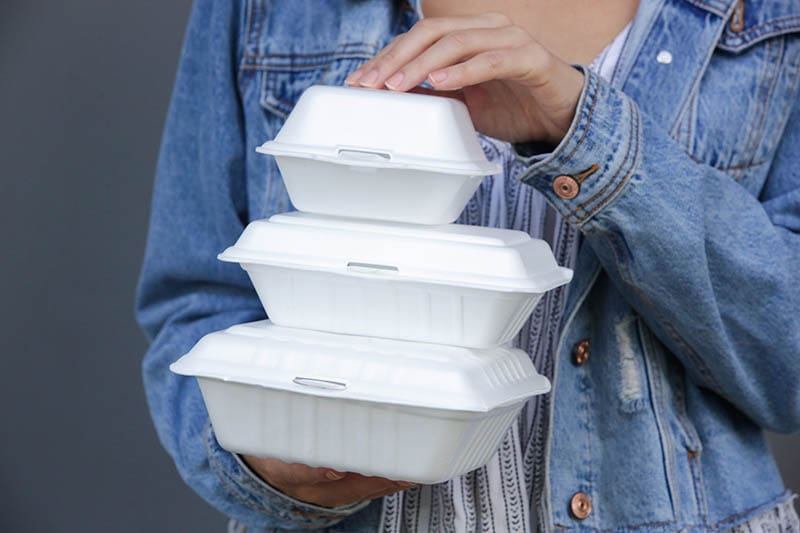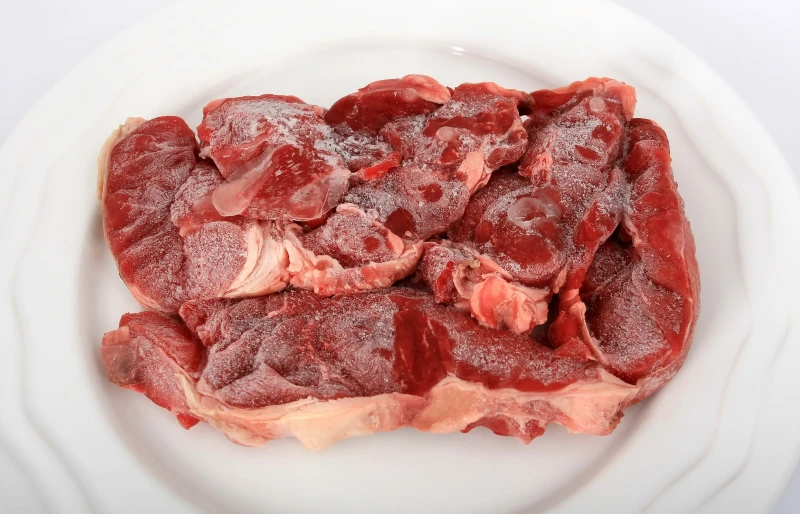Can You Microwave Cardboard? (Microwaving Safety Tips)
-
Pete Ortiz
- Last updated:

Most US homes have a microwave due to its versatility and convenience. You can use it for cooking, warming, and defrosting food. However, microwaves can also be dangerous or ruin food if you use the wrong material.
One of the most common questions asked is: can you warm food in a cardboard box? Imagine that you just got home from work, are exhausted, and want a quick meal. You have some pizza in the fridge, wondering whether you can pop it in the microwave with the cardboard box. The answer is yes, you can. However, you need to take a few seconds to check whether that specific cardboard is microwave safe.
Is It Safe to Microwave Cardboard?
This largely depends on the type of cardboard you are using. Some cardboards are microwave safe, and you can microwave them for short periods without any downsides. Ensure you check every 30 seconds to reduce the risk of overheating it and causing a fire.
If you need to heat the food for an extended period, it’s safer to transfer it to another microwave-safe container. When the cardboard is exposed to temperatures above 400°F for an extended period, the moisture level drops, making it more likely to catch on fire.
Most cardboard boxes used to pack food come with a microwave-friendly sign. If it is missing one, it’s safe to assume that the cardboard is probably not microwavable. Containers with #5 at the bottom are also considered safe to use in the microwave.

Type of Cardboard Boxes You Can’t Microwave
Some cardboard boxes, like pizza boxes, are generally safe to microwave for a minute or two. While most companies make boxes that can easily be reheated safely, some are not 100% safe. Here are some cardboard containers that you cannot microwave:
- Cardboard boxes with ink on them: these containers can release chemicals into your food, which can harm your health.
- Cardboards with glue or another type of adhesive: most adhesives have harmful chemicals which can be released into the food after being heated. If you are sure that your cardboard has some adhesive, it’s best not to microwave it, even for a short duration.
- Cardboards with metal handles: Metal is a no-go for microwaves, including the metal handles on takeout containers.
- Cardboards with a lining: plastic and wax linings can dissolve under high temperatures and release harmful chemicals into the food.
Tips for Microwaving Cardboard
If you’d like to warm up your food while it’s still in the cardboard container, here are some safety tips you should follow:
- Ensure there is enough food in the cardboard container—this helps absorb the waves and reduces the risk of the cardboard catching fire.
- Line up the cardboard with a napkin or paper towel to help soak up all the extra oils, which could increase the speed at which the cardboard heats up and increase the fire risk.
- Monitor your food regularly, and don’t leave the microwave unattended. This way, you will notice any sign of fire before it spreads.
- Look for the microwave-safe label on the cardboard. If it’s not there, move your food to another dish before popping it in the microwave.
- Refrain from warming your food in a soggy cardboard container.
Other Things You Should Never Put in the Microwave
According to the National Fire Protection Association, microwaves are responsible for 4% of all cooking fires per year in the US and 1% of all the associated deaths. Most of these fires are caused by people putting dangerous things in the microwave.
Some items that should never be put in the microwave are common knowledge, while the rest may not be as common. So, here we’ll breakdown a list of the things you should never put in a microwave:
Materials You Should Never Put in the Microwave
1. Styrofoam

Styrofoam melts quickly when exposed to radiation from the microwave, which can cause a fire. It can also release dangerous chemicals into your food which can cause long-term illnesses such as colon and stomach cancer.
2. Single-Use Plastic
While some plastic containers are microwave-safe, single-use containers such as plastic bags and yogurt containers are not. They may contain a chemical called bisphenol, released in the food after melting, which is linked to various health problems. Single-use plastic containers also melt and fuse with the food, making it inedible.
3. Aluminum Foil

Aluminum foil is usually used to wrap up leftover food in most households. However, you should never put it in the microwave. It’s a thin metal sheet, and instead of absorbing the radiation waves in the microwave, it reflects them. This can create a spark that can ruin the microwave or, worse, fire.
4. Metal and Stainless Steel
This is quite obvious. You should never put anything with metal or stainless steel inside the microwave. This includes plates and travel mugs with metal rims. Not only do these vessels prevent your food from warming up, but they also reflect the waves which can start a fire.
- Related Read: How to Tell if Something Is Microwave Safe
Foods You Should Never Put in the Microwave
A large percentage of the population does not know that some foods don’t belong in a microwave. These foods can explode or burn very fast when exposed to microwave radiation. They include:
1. Eggs

While it’s generally okay to cook eggs in a microwave, microwaving an entire egg in its shell is dangerous and messy. The rapid heating creates a lot of steam in the egg, causing it to explode and cause a huge mess.
2. Water
Although popping a cup of water in the microwave may seem harmless, it can be dangerous. Microwaving water superheats it without boiling, which can cause severe burns if splattered and also damage the appliance.
3. Raw Peppers

Raw peppers, especially the extra spicy ones, contain a high amount of capsaicin which can vaporize at high temperatures. The fumes can be dangerous when inhaled. They can also burn your eyes. If you are going to microwave these peppers, ensure you put them in the microwave for a very short duration. Cover them with a baking sheet to avoid coming in contact with the fumes.
4. Broccoli
According to the Journal of Science and Agriculture, microwaving broccoli destroys its nutrients. Try another method of warming them, including steaming and blanching.
5. Frozen Protein

Cooking frozen meat in the microwave is not safe. Microwaving frozen proteins causes them to cook unevenly and can encourage the growth and spread of dangerous bacteria. A safe solution is to thaw the frozen protein in the microwave and then cook it in the oven.
6. Pasta Sauces
Pasta sauces, especially tomato-based pasta sauces, are notorious for a messy microwave. The sauce can splatter all over the appliance once it is heated. A thick sauce can also trap the steam until it explodes, which might ruin your microwave.
Safe Materials to Use in the Microwave
Now that we’ve looked at everything you should never use in the microwave, let’s look at the safest materials you can use.
Ceramic and glass containers are heatproof and are the best containers to use when heating food in the microwave. Baking sheets, straws, and wood baskets are also safe to use as long as they don’t have any metal parts. Finally, paper products that are approved for microwave use are also safe to use.
See also:
- Can You Put Napkins in the Microwave? (Microwave Safety Tips)
- Can You Put Paper Towels in The Microwave? (Microwave Safety Tips)
- Can You Microwave Cardboard? Here’s How to Know
- Why Microwaves Can Catch Fire—And How to Use Yours Safely | Wirecutter
- Phenolic compound contents in edible parts of broccoli inflorescences after domestic cooking – Vallejo – 2003 – Journal of the Science of Food and Agriculture – Wiley Online Library
- Microwave Safe Dishes | How to Guide | Quick Answers
Featured Image Credit: Anna Hill, Unsplash
Contents




